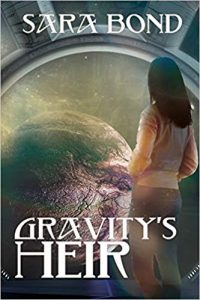The Write Cocktail for Your Book
 There’s doubt that Ernest Hemingway actually said, “Write drunk and edit sober.” He denies that he ever mixed his pleasure with his work. He was a professional, and writing was his work. Writing drunk, Hemingway alluded, was something only William Faulkner did.
There’s doubt that Ernest Hemingway actually said, “Write drunk and edit sober.” He denies that he ever mixed his pleasure with his work. He was a professional, and writing was his work. Writing drunk, Hemingway alluded, was something only William Faulkner did.
Twentieth century author shade aside, the accuracy of the quote is just a technicality. Hemingway was famously an enthusiastic drinker, knocking back mojitos, daquiris, negronis and whiskey sours with alacrity, and many connected his drinking with his ability to craft incredible stories.
He’s not the only model for the image of the drunk writer, either. Kerouac, St. Vincent Mallay, Faulkner, Williams, McCullers, Capote, all maintain reputations as writers first, but drunkards a close second.
The world over, this image persists; writers have embraced the concept of drinking while they write. The idea is that a glass of wine or whiskey—or absinthe if you’re Oscar Wilde—can help loosen the creative juices, unleash the muse, or quiet the inner critic just long enough to get those crucial first words on the page. Drinking can lubricate the words so that they flow, if not effortlessly, at least with less resistance, onto the page.
As most tropes, the stereotype of the drunken writer is not completely accurate. Plenty of writers eschew drinking altogether as it can be a hindrance to artistry. Alcohol can muddy the message, wine can winnow down your words to clichés and tropes, and no one wants to mar the page with the not-so-brilliant ideas of a drowned intellect.
Further, excessive drinking is unquestionably a hindrance to any contemporary writing career. The amount of work required to stay on top of publicity, engagement, media maintenance, and marketing, let alone the actual writing aspect of the job, means you need to maintain a cool and engaged head to get anywhere as a modern author.
But the trope of the writer who drinks, persists. I’ll admit, I have a rye Manhattan beside me as I sketch the first draft of this essay. For me, a cocktail at the end of the day is something special, something that sets apart my daily life as homemaker and mother of two young children.
It delineates my day from the maintenance of home life, groceries, meals, cleaning, and errands, and separates out my writing as an indulgence. The ritual of mixing up special ingredients in just the right proportions, and sitting down with my work in progress is one that I indulge in.
A cocktail or two can give me enough of a mental break from the daily grind and allow me to release the world and fall back into the stories in my head. I can step away from the to-do lists and budgets and immerse myself in my own world. More than one or two drinks at a time can obviously make it harder to pin down the story ideas that haunt me, so I always make it a point to limit myself. But with the right cocktail, I can capture the taste, the feel, the soul of a story, and make my writing and reading a truly immersive experience.
That’s why I started the Pairings Project.
I have a love for high quality cocktails. There’s a precision in finding just the right balance of components to evoke a taste, a feel for a certain mindset or emotion. For light-hearted banter between enemies-to-lovers, a sparkling Aperol spritz offers the right balance of bubbles and bitter taste. An intense action sequence, though, a more serious drink is needed: perhaps a Sidecar or an Old Fashioned. I like to play with ingredients to find the right balance for my own palate, to use it to complement what I’m working on, and the act of mixing the cocktail that was specially chosen for that day’s writing makes the whole act more deliberative.
With the Pairings Project, I’ve taken my own writing ritual and extended it to other people’s stories. For the past several months, I’ve been pairing cocktails with some of my favorite recent reads. I’ll write up a review, and then pair the book with its own special cocktail to post up on my website’s blog. I explain the reason I chose the drink, provide a recipe, and even photograph the finished product with the book. The finished result is an invitation to an experience with the story.
Not every book I read gets a pairing. Sometimes, I just can’t find the right cocktail to go with the book, or I have a recipe in mind, but have to find the time to get the right ingredients. I recently found the perfect drink for a friend’s book and went to ten different liquor and grocery stores trying to find a crucial mixer to go with it. Another time, I couldn’t find the right cocktail to pair with a historical fiction I finished, so I made one up with ingredients I had on hand. (That cocktail is now going to be the feature drink at my friend’s book launch party!)
Writing and drinking should not be a mindless combination. If you’re going to drink and write, make it a deliberate and worthwhile experience. Choking down the first glass of swill you happen to find in the back of your liquor cabinet won’t call the muse to come to you, and getting drunk before your keyboard will just result in drivel that you’ll have to edit when sober.
Instead, take a moment to craft something special, something that puts you in the right mindset for your next scene or gets you in the head of your main character. Pair your work in progress with a cocktail that is worthy of your story. And if you have trouble coming up with something worth drinking, hit me up. I’m sure we can find a cocktail worthy of your next great story.
——–
Sara Bond’s debut novel GRAVITY’S HEIR comes out February 6, 2020 from Black Rose Writing. It’s an action-filled space opera and pairs well with a classic whiskey sour. For more drink recipes and reviews, check out the Pairings Project at www.saratbond.com.
GRAVITY’S HEIR
 “Legacy is nothing but history, if it doesn’t have a future.”
“Legacy is nothing but history, if it doesn’t have a future.”
When her father threw her out, sacrificing his only living daughter for the good of his shipping conglomerate, Lena Lomasky swore she could make it on her own. But now she’s broke and desperate, and pride won’t fuel her spaceship. Her latest job is simple: carry a datastick of state secrets home to her father. The same man who cut her off without a cent. Whatever. She can do this. Pass the whiskey.
An ill-timed royal assassination ignites a war and Lena’s crew is blamed. When she thinks to use her cache of state secrets to save them, Lena discovers she’s actually smuggling the only known plans for her father’s invention: a gravity bomb that can vaporize entire cities.
Lena must decide: continue on and hope her father can design a defense to save millions of lives, or leverage the plans to save the only people who really matter.
BUY THE BOOK HERE
Category: Contemporary Women Writers, How To and Tips
Comments (2)
Trackback URL | Comments RSS Feed
Sites That Link to this Post
- Finding Balance in Isolation : Women Writers, Women's Books | March 31, 2020




Oh I love your post Sara. Sublime idea to pair books and well-crafted cocktails. Before I quit drinking, I was a connoisseur like you. I liked vodka and gin, of course, but I was passionate about learning scotch and whisky. My sister only drinks cosmos, her husband is Grey Goose and tonic, my husband drinks vodka and seven. I scoff at them! That’s not drinking! Alas for me. But now I can mentally savor your books and cocktails. Here’s to the Pairings Project!